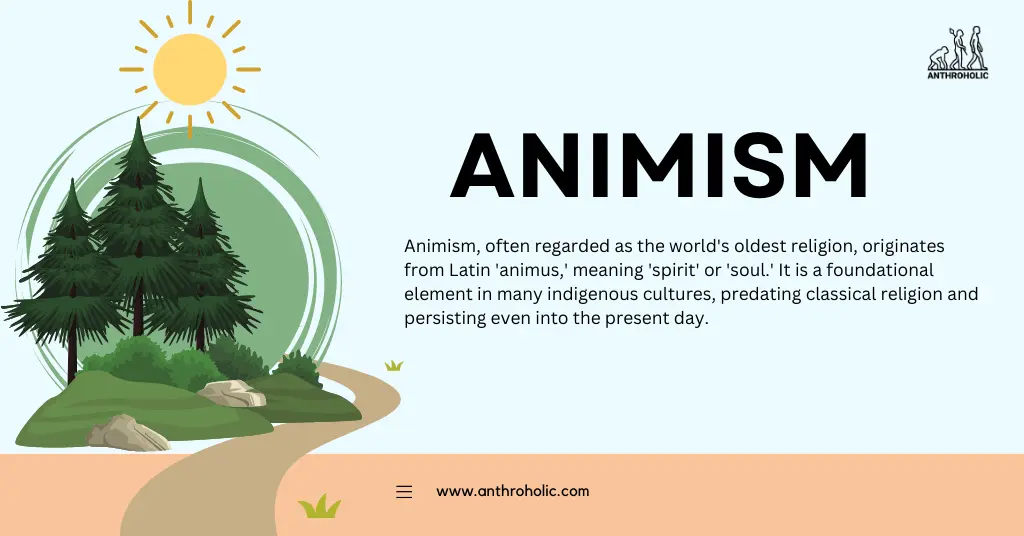AI Answer Evaluation Platform Live Now. Try Free Answer Evaluation Now
Animism
Animism, often regarded as the world’s oldest religion, originates from Latin ‘animus,’ meaning ‘spirit’ or ‘soul.’ It is a foundational element in many indigenous cultures, predating classical religion and persisting even into the present day [1]. This system of beliefs attributes a spiritual essence to all elements of the natural world, including animals, plants, rocks, rivers, and even weather phenomena.

Origin and Historical Development
Animism has its roots in the earliest human societies, with evidence of animistic belief systems dating as far back as the Paleolithic era [2]. However, the term ‘animism’ itself was first introduced by anthropologist Sir Edward Tylor in his work, “Primitive Culture,” published in 1871 [3].
Prehistoric Animism
Animistic practices have been observed in many prehistoric cultures, often associated with shamanic traditions and rituals. Evidence from cave paintings and burial sites suggests that early humans believed in the spiritual essence of animals and nature.
Animism in Classical and Medieval Periods
As societies grew more complex, animism continued to influence larger religious systems. Elements of animism are evident in ancient Greek, Roman, and Egyptian religions, where gods and goddesses were often associated with natural elements.
Cultural Significance of Animism
Animism has shaped cultural practices across the world, reflecting unique understandings of nature and the cosmos. While practices vary between cultures, some common characteristics include:
- Reverence for Ancestors: Most animistic cultures hold a deep respect for ancestors, believing their spirits continue to influence the living world.
- Nature Worship: Animists often regard natural phenomena as manifestations of divine spirits.
- Rituals and Ceremonies: Animistic societies frequently engage in rituals aimed at appeasing or communicating with spirits.
The following table represents these core characteristics across three distinct cultures:
| Culture | Ancestor Worship | Nature Worship | Notable Rituals |
|---|---|---|---|
| Shinto (Japan) | Yes | Yes | Kagura (dance to appease spirits) |
| Native American Tribes | Yes | Yes | Vision Quest |
| Maori (New Zealand) | Yes | Yes | Karakia (prayers) |
Animism in Contemporary Societies
Despite the dominance of monotheistic and polytheistic religions, animism persists in modern societies, often intertwined with more established religious practices.
Animism and Syncretic Religions
Many societies have syncretic religions, combining elements of animism with other religions. For example, Vodou in Haiti merges West African animism with Catholicism.
Indigenous Cultures and Animism
Indigenous cultures across the globe continue to hold animistic beliefs. These societies often focus on living in harmony with nature, viewing the land as a living entity deserving respect and protection.
Conclusion
Animism, while often overlooked in discussions of mainstream religions, has been and continues to be a pervasive force shaping human understanding of the world. From the earliest societies to modern indigenous cultures, animism’s influence is evident in the enduring respect and reverence for the natural world and the spiritual entities believed to inhabit it.
References
[1] Harvey, G. (2005). Animism: Respecting the Living World. Columbia University Press.
[2] Pals, D. L. (1996). Seven Theories of Religion. Oxford University Press.
[3] Tylor, E. B. (1871). Primitive Culture. London: John Murray.




